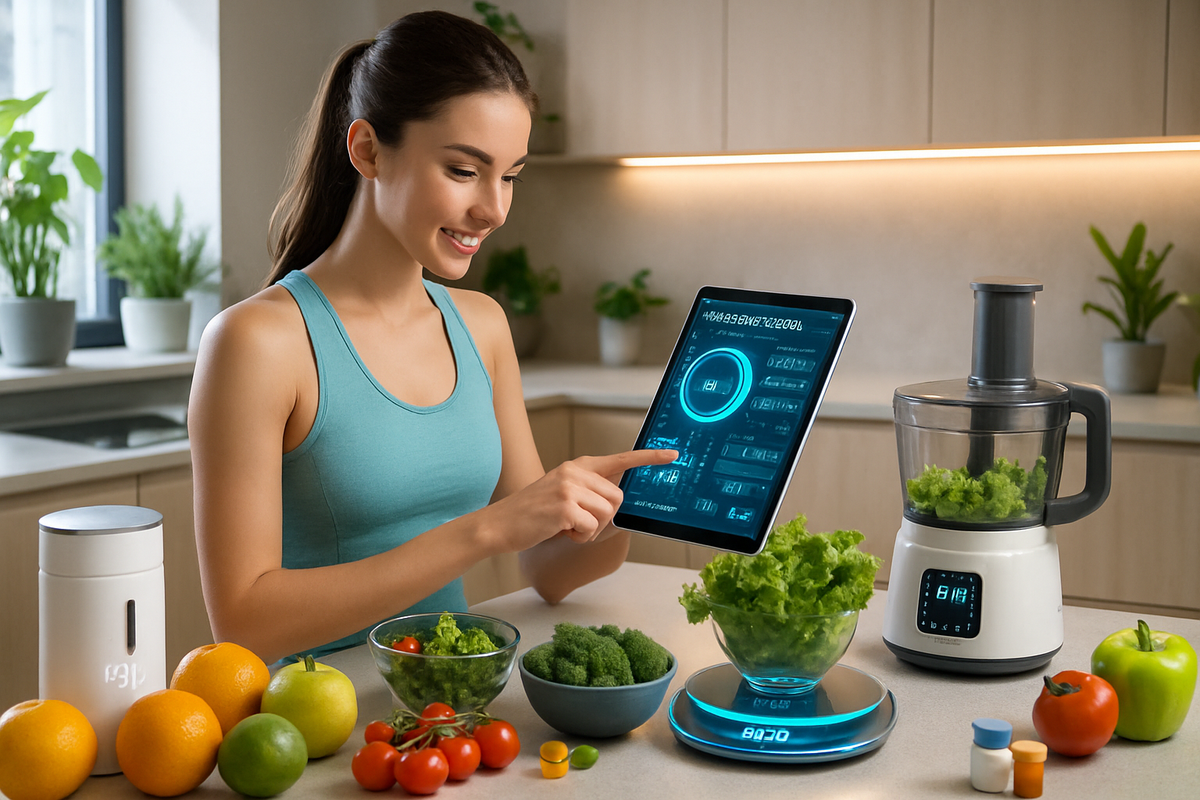The Personalized Nutrition Revolution: How AI, Digital Twins, and Biohacking Are Shaping the Future of Wellness
Step into 2025, where AI and biohacking transform nutrition into a tailor-made experience, blurring the lines between your health reality and futuristic possibilities. Are you ready to revolutionize your diet and wellness journey?

Welcome to the Age of Personalized Nutrition
Imagine a world where your diet isn’t just a one-size-fits-all prescription from a dusty food pyramid, but a living, breathing, AI-powered roadmap tailored to your DNA, daily habits, and wildest longevity dreams. Welcome to 2025, where the lines between science fiction and your breakfast are officially blurred.
“Personalized nutrition is no longer the privilege of the Silicon Valley elite or Olympic athletes. It’s becoming a daily reality for anyone with a smartphone—and a healthy dose of curiosity.”
The Tech Trifecta: AI, Digital Twins, and Biohacking
Three seismic shifts are converging to redefine how we approach health and nutrition:
- AI-powered dietary monitoring (think: smart glasses that know what you’re eating)
- Human digital twins (your virtual self, but without the embarrassing karaoke videos)
- The biohacking movement (DIY wellness meets next-gen science)
1. AI-Driven Dietary Monitoring: Your Plate, Upgraded
Let’s start with the game changer: AI-based dietary analysis. DietGlance and similar systems use wearables (even eyeglasses!) to snap privacy-preserving photos of your meals, analyze what you’re eating, and provide real-time nutritional insights. No more guesstimating if your salad qualifies as healthy or if that third slice of pizza just sabotaged your macros.
How does it work? AI models trained on massive food databases identify ingredients and portion sizes, then cross-reference your choices with a nutrition library to generate personalized suggestions. It’s like having a dietitian in your pocket—minus the awkward small talk.
2. Digital Twins: Meet Your Virtual Doppelgänger
Move over, Tamagotchi—human digital twins are here. These dynamic virtual models mirror your body’s molecular, physiological, and lifestyle data in real time. The result? A hyper-personalized health dashboard that can:
- Predict how your body will respond to specific foods or supplements
- Help doctors tailor interventions and preventative care
- Enable remote diagnosis and continuous wellness optimization
Think of your digital twin as your wellness co-pilot: always learning, never judging, and—unlike your actual twin—never stealing your snacks.
3. Biohacking: The Citizen Science of Longevity
On the ground level, biohackers are turning their bodies into living laboratories. From tracking micronutrients with wearables to experimenting with fasting protocols, the goal is simple: optimize every aspect of health and performance.
Modern biohacking communities, like those found at Biohackers World conferences, blend tech, nutrition, and self-experimentation. These enthusiasts are the early adopters of AI-powered nutrition, digital twins, and every smart gadget you can imagine (and a few you probably can’t).
Why Personalized Nutrition is a Big Deal (And Not Just for Instagram)
Generic health advice is officially out. The future belongs to those who know exactly what their bodies need—and when. Here’s why this matters:
- Better outcomes: Personalized plans beat generic diets for weight loss, energy, and chronic disease prevention.
- Motivation that sticks: Real-time feedback and tailored insights keep you engaged (and more likely to skip that midnight ice cream binge).
- Empowerment: You’re in control—armed with data, not dogma.
“Personalized nutrition is about more than just living longer—it’s about living better, every single day.”
Ethics, Risks, and the Fine Print of Self-Optimization
Before you go full cyborg, let’s talk risks:
- Privacy: Who owns your health data? Make sure your devices and apps are transparent about data use.
- Accuracy: Not all AI is created equal—garbage in, garbage out. Look for tools backed by credible science.
- Obsession: Chasing “perfect” health can backfire. Remember: optimization is a journey, not a finish line.
Ethical frameworks are evolving as quickly as the tech. The best advice? Stay curious, skeptical, and informed. And maybe don’t take health advice from your refrigerator. Yet.
Your Roadmap to Personalized Wellness
- Start tracking: Use wearables or apps to gather baseline data on your nutrition, sleep, and activity.
- Explore AI-driven analysis: Try nutrition apps or platforms that provide personalized insights (look for science-backed recommendations).
- Join a community: Connect with like-minded wellness explorers—biohacking forums, workshops, or local meetups.
- Mind the ethics: Choose tools that respect your privacy and encourage healthy, sustainable habits.
- Iterate and experiment: Personalization is about learning what works for you, not following someone else’s blueprint.
Ready for the Next Step? Join the Conversation!
The wellness revolution is happening right now—and the best insights, tips, and stories are being shared by our community at Funaix. Subscribe for free today and unlock:
- Exclusive, subscriber-only wellness guides
- Smart news, expert interviews, and actionable tips
- The ability to comment, share your story, and connect with fellow biohackers (comments are for subscribers only!)
Don’t miss your chance to be part of the next chapter in personalized health. Join us—your future self will thank you.
Published on August 11, 2025. For references and further reading, explore recent research on AI in nutrition, human digital twins, and the biohacking movement.




